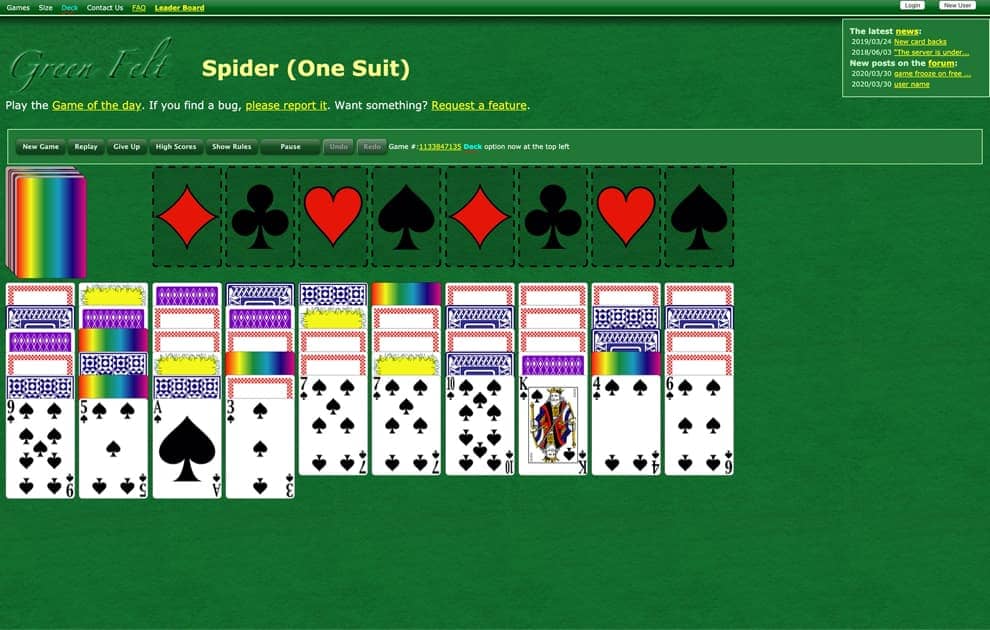

#FREECELL CARD GAME IO FREE#
Cards moved to a free cell can be moved back down to the tableau at any time – either to an empty column or stacked on a card of the opposite color with a value of one higher.Īrguably the biggest difference between Freecell and Klondike Solitaire, however, is in the number of stacked cards a player is allowed to move at once. In Freecell, players are allowed to use four free cells above the tableau to move and temporarily store cards to expose deeper cards in the stack. Firstly, there are no face-down cards in Freecell – all cards begin exposed, so players can tell where each card is in the tableau from the start of the game.Īs the game’s name suggests, the second key difference is the ‘free cells’. There are a few main differences between Freecell and traditional Klondike Solitaire. Differences between Freecell and Klondike Solitaire If the player runs out of moves before the foundation piles are completed, the game is lost. The game is won when the player completes the four foundation piles. Players can also make use of four ‘free cells’ above the tableau – where cards can be stored to free up more useful cards stacked below. They can then move any following cards to the foundation piles chronologically based on their value. And so on.Īs and when players expose ace cards, they can move them to the foundation piles. For example, a red four stacks on a black five, which stacks on a red six. As with all solitaire games, cards can be stacked in the tableau based on color and value.
#FREECELL CARD GAME IO HOW TO#
How to play Freecellįreecell follows a basic solitaire format, with players aiming to create four winning foundation piles – one for each card suit.


The game is played with a traditional deck of 52 playing cards. The name ‘Freecell’ refers to the four ‘free cells’ available to use as temporary storage for tableau cards – this differentiates the game from other variations of solitaire, like Klondike and Spider. Once all four foundation piles are complete, the game is won. Like all solitaire games, the aim is to stack cards based on value and color to expose cards deeper in a stack and move them to four ‘foundation’ piles. The game is easy and fun to play, and includes statistics for time length of game, moves used and more! If you want to retry a certain game number just click the number on the bottom of the page and insert the game number you want to play.FreeCell is a single-player patience card game that is a variation of the traditional solitaire format. The game offers unlimited undos, but each undo counts as a new move so if you are trying to win the game in as few moves as possible be careful about how many undos you use. Just make sure the pile's top card is one higher than the moved card and a different color when moving between Tableau piles. You can move cards around onto the Free Cells to free up other cards, or you can move one or more cards from one Tableau pile to another. The Foundations are ordered by suit and rank, each Foundation has one suit and you must put the cards onto them in the order: Ace, 2, 3, 4, 5, 6, 7, 8, 9, 10, Jack, Queen and King. To win FreeCell, you must get all the cards from the Tableau onto the Foundations. The Foundations and the Free Cells are empty. The Tableau piles are numbered from 1 to 8, piles 1-4 start with 7 cards each and piles 5-8 with 6 cards each. The game starts with four piles in the upper left corner called the Free Cells, four piles in the upper right corner called the Foundations and eight piles that make up the main table called the Tableau.


 0 kommentar(er)
0 kommentar(er)
